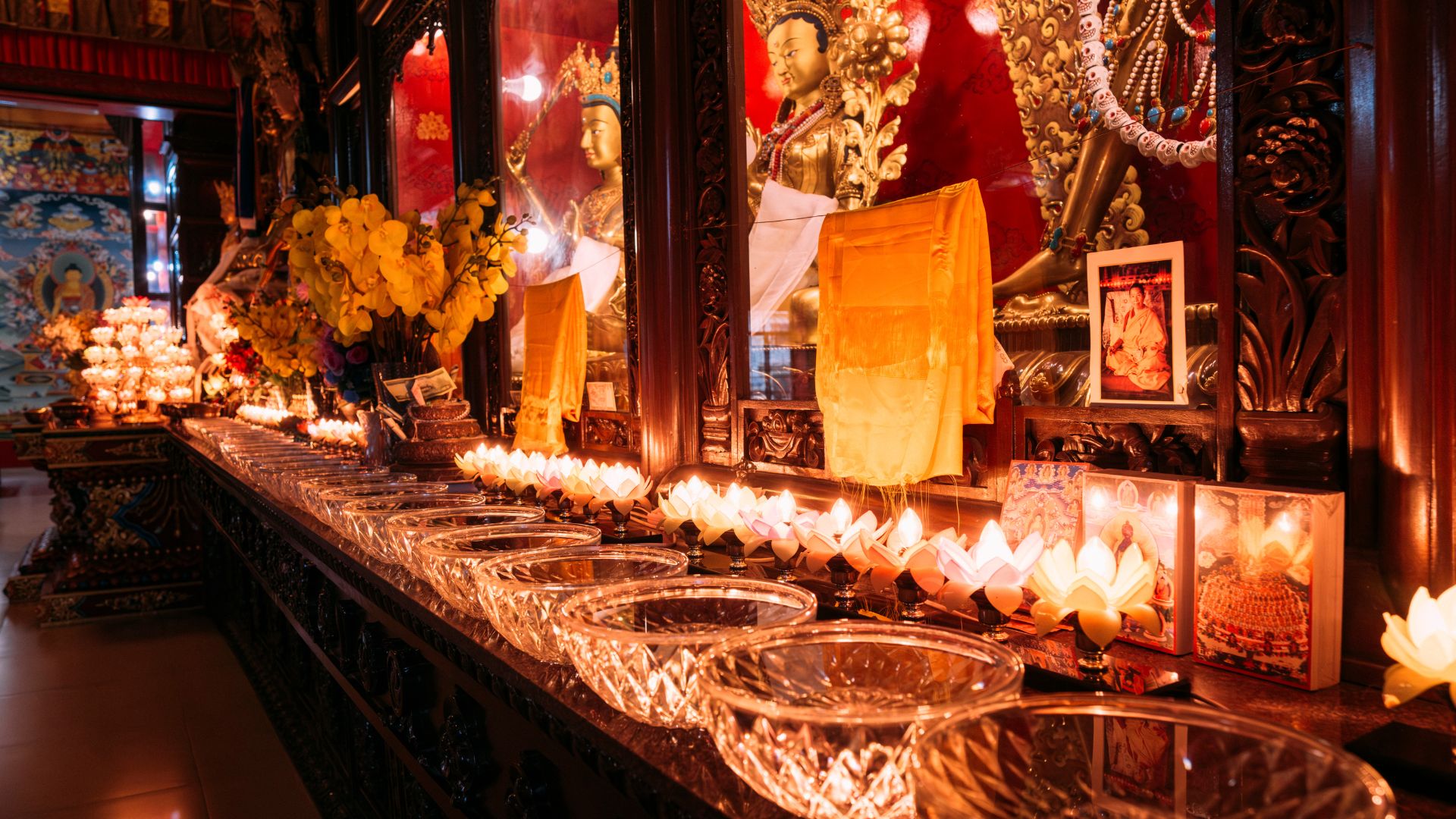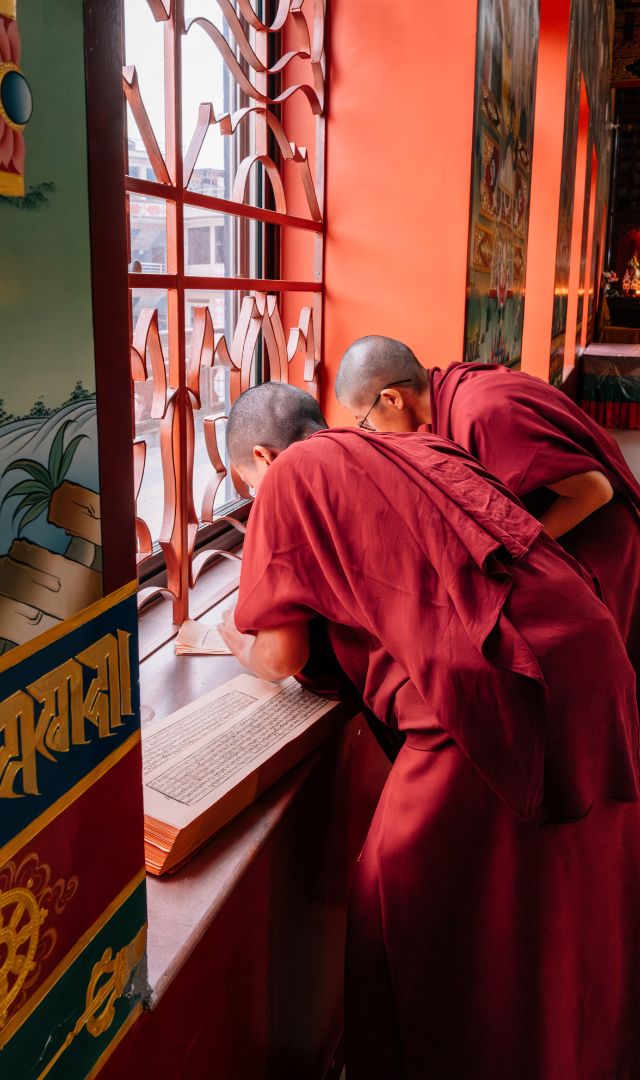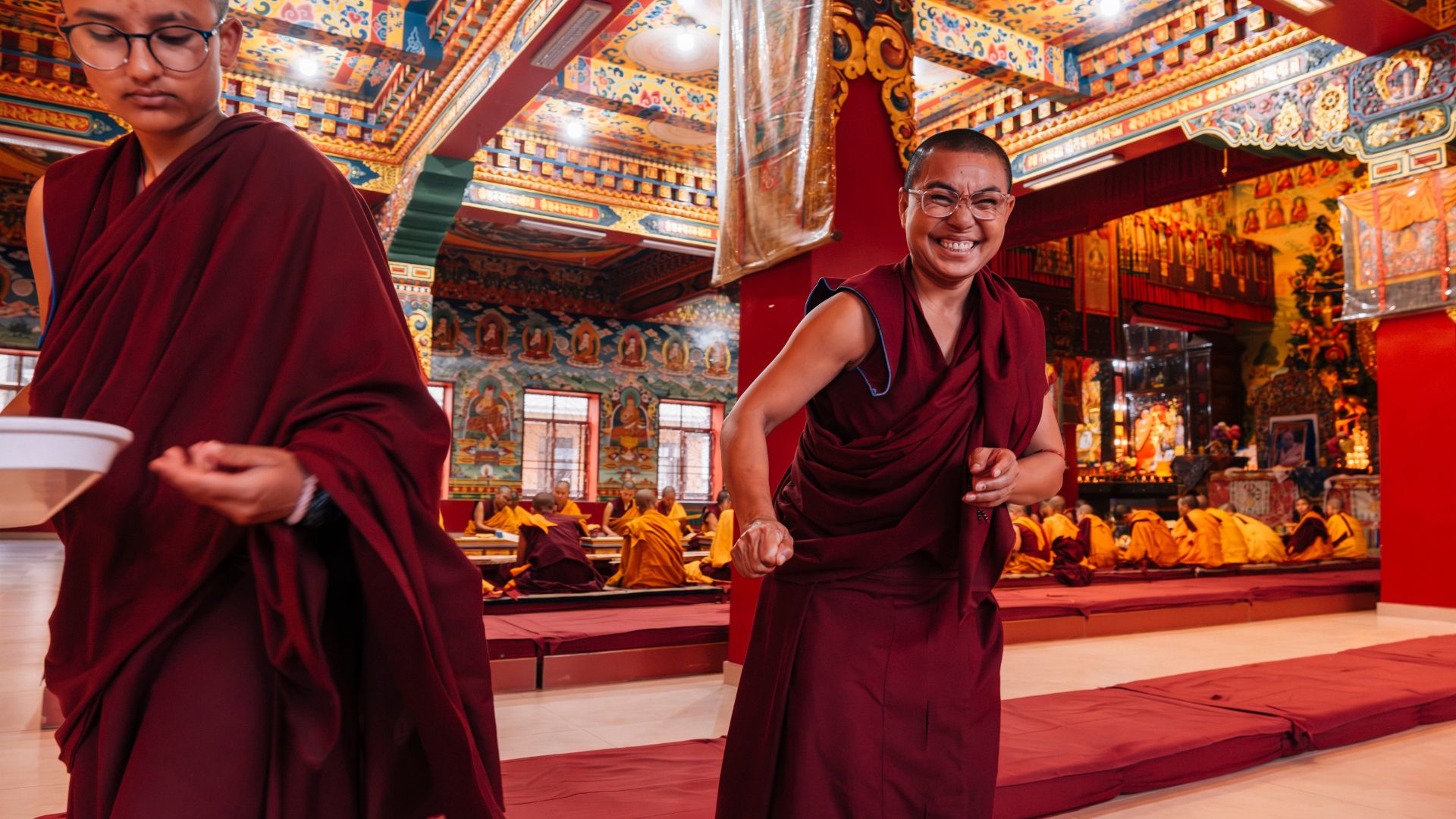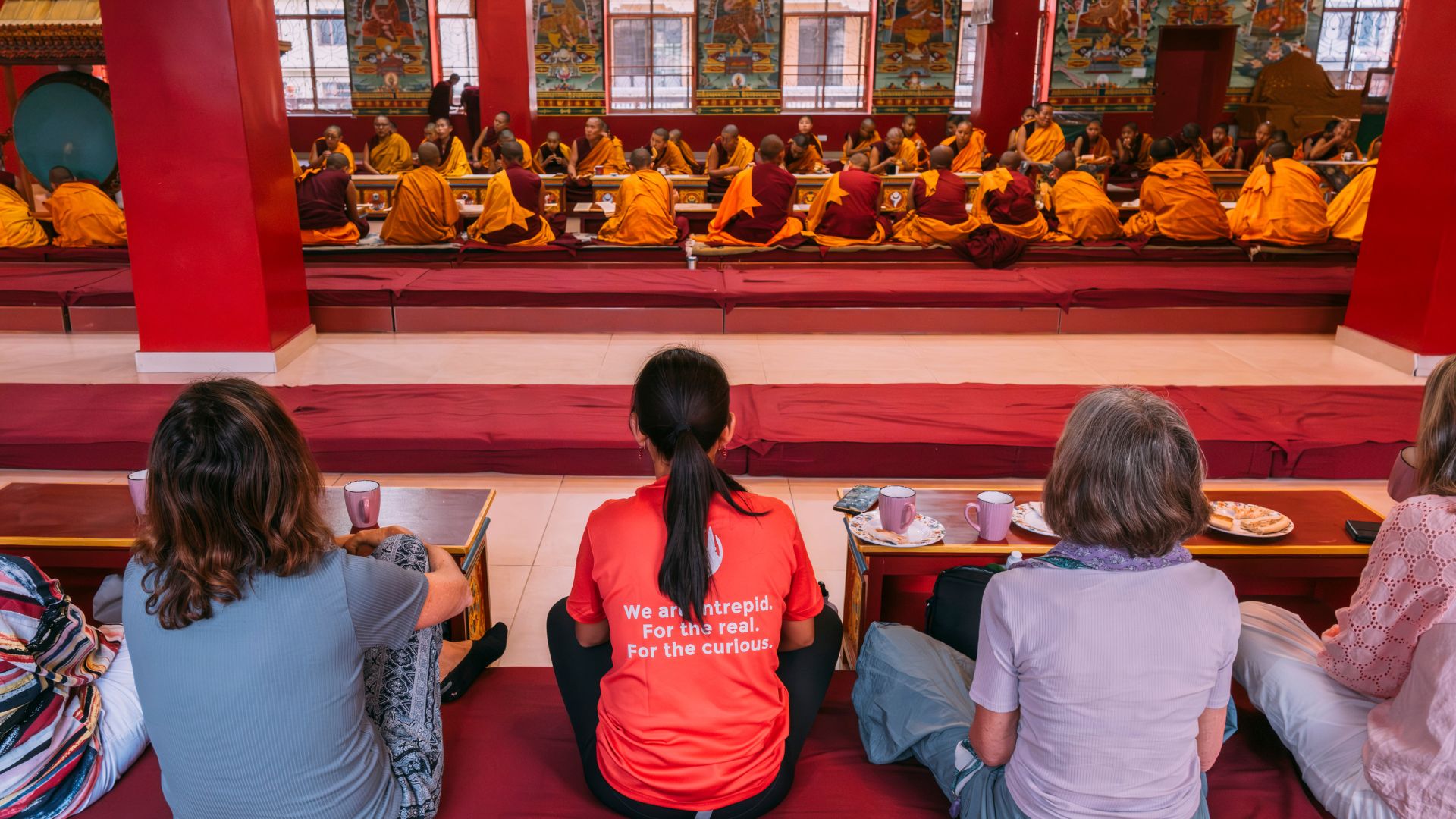Because the solar rises over Kathmandu, town basks in a quiet stillness – a uncommon discover among the many generally chaotic streets. However the halls of Khachoe Ghakyil Ling, a Buddhist nunnery on town’s outskirts, are loud – it’s time for prayer (and chai).
The recent morning air takes the sting off our 5 am wake-up. As our minibus winds by means of the tightly woven Kathmandu streets, we’re glued to the home windows. The town we’d wandered in the day past was totally different now. It was nonetheless.
Just a few store distributors are inclined to their shows for the day, some sari-clad ladies sweep their sidewalks, whereas a handful of tiny, embellished taxis make the streets transfer.
It’s a stark distinction to the anarchy of cabs and vehicles that flooded the dusty pavement and the ocean of those that often crowd the noisy sidewalks. And it fascinates us.
We’re on the highway earlier than the remaining to achieve the Buddhist nunnery Khachoe Ghakyil Ling (which means pure land of bliss) throughout their prayer time.
Identified domestically as Kapan Ani Gompa, the Buddhist nunnery was based greater than 30 years in the past and follows the Gelungpa college of Buddhism. It affords ladies a uncommon alternative to study commonplace tutorial topics alongside conventional Buddhist teachings, like philosophy, ritual arts and chanting.




We pull up, and a set of wood gates as tall as two males open vast to welcome us. Our Intrepid Nepal chief, Sumi Acharya, gestures us to rapidly comply with her throughout the neatly saved grounds – the nuns have already begun their morning prayer.
Inside a couple of minutes we’re standing on the doorway to what should certainly be essentially the most ornately adorned constructing any of us have ever seen – the principle prayer corridor of Khachoe Ghakyil Ling.
‘Wow’, says one of many ladies in our group of six, as she appears up in awe, mouth vast open. Her phrases aren’t profound, however I can’t consider something extra becoming both.
As we wait on the entrance, Sumi explains that the nunnery is house to nearly 400 Buddhist nuns, some as younger as 9 and as much as 70. Some are right here to commit their lives to studying the teachings of Buddha and comply with the upper schooling program. Some are right here to serve their group as lecturers, cooks or employees of their hand-made incense store. And we’re right here to watch and pay attention as they carry out their morning prayers.
Earlier than lengthy, a small, barefoot girl wrapped in a flowing maroon gown hurries over to us. She motions for us to take off our footwear and welcomes us into the sprawling prayer corridor. We bow our heads softly and comply with her in.


Once I say each inch of the corridor is embellished with intricate paintings, I imply it. The partitions and ceiling inform tales of various Buddhist deities with gold, deep reds and forest inexperienced. Sumi tells us the lifetime of Buddha can also be depicted all through these work, alongside an enormous illustration of the Tibetan Wheel of Life which represents the cycle of life, demise and rebirth.
At one finish, an alter with ornaments, statues of Buddhist gods (together with the Buddhist deity, Avalokiteshvara with 1000 thousand arms), candles and flowers overlook the corridor.
And there, within the center, sit some 40 nuns singing their morning prayers. To me, it feels like a combination between a chant and a music. They sit on cushions in two rows going through one another, swaying aspect to aspect in unison. Their maroon uniform now has a deep yellow scarf, generally known as a chogu, wrapped on high. This chogu is worn most usually by nuns who comply with the Gelungpa college.
I can’t assist however grin as I discover a number of the youthful ladies tucking into their breakfast because the others pray, some laughing between themselves. Though Sumi had informed us that ladies as younger as 9 have joined the nunnery, I’m nonetheless stunned (and delighted, in a means) to see they’ve saved their child-like appeal in what appears such a grown-up house.


When a girl devotes her life to Buddha, she leaves behind materialistic values. She trades her garments for a gown and shaves her head to symbolise simplicity and detachment.
We sit cross-legged on the ground on one aspect of the corridor, mesmerised by the sights and sounds, every of us quietly grinning from ear to ear. We all know this expertise will stick with us lengthy after the morning ends.
One other nun approaches our group in her lengthy maroon gown, identical to the remaining, and a big pair of black studying glasses.
‘Chai?’ she says with a smile as she holds up a silver thermos twice the scale of my head. ‘Sure, please,’ all of us nod.
We might have solely been within the nation a number of days, however it doesn’t take lengthy to grasp that the candy, wealthy chai right here is just not one thing to show down.
The delicate aromas of spice and cinnamon fill the air as we clutch our arms round our heat mugs and take heed to the hum of the ladies and ladies who’ve devoted their lives to Buddha.
Sound like your cup of tea? Absorb this memorable expertise for your self on Intrepid’s Nepal: Girls’s Expedition.

